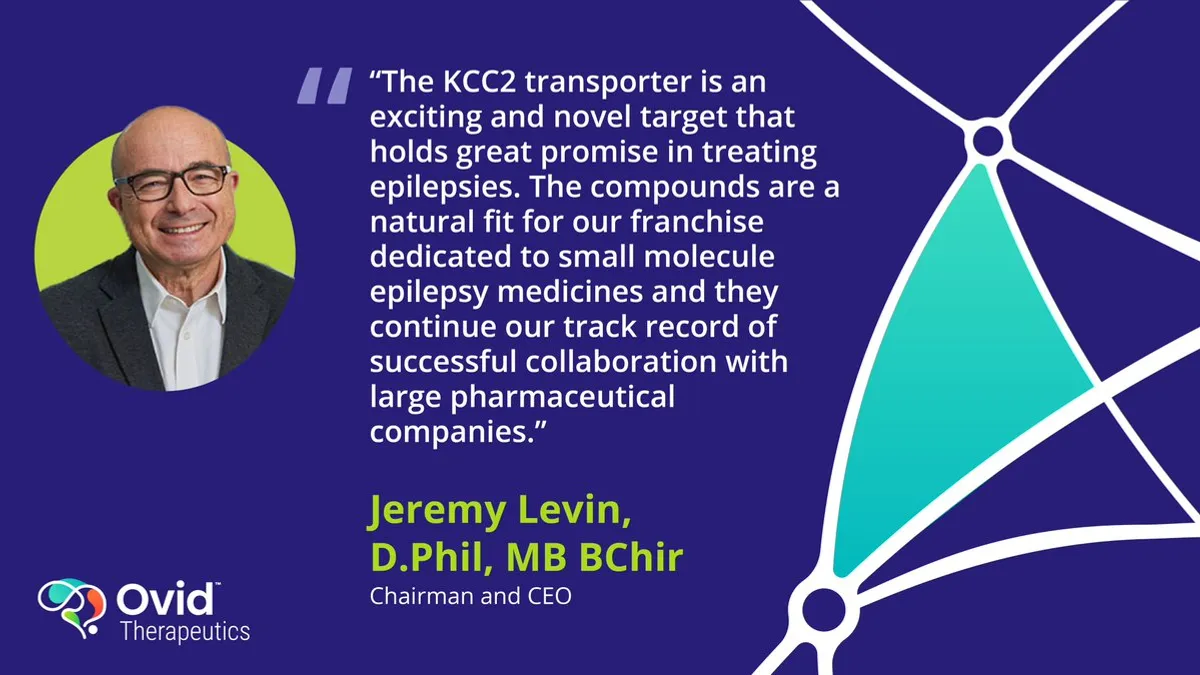Collaboration, knowledge-sharing and patient engagement are all integral to success with rare disease innovation. Jeremy Levin, chairman and CEO of Ovid Therapeutics, a clinical-stage biotech focused on rare neurological disorders, says these key objectives are helping to propel outcomes in rare disease research.
Here, he shares his perspective on the ongoing challenges scientists are facing with rare diseases and his hopes for the future of the space.
PharmaVoice: What big changes have taken place in the rare diseases research space over the past several years?
Jeremy Levin: One trend that has been most gratifying to watch is the democratization of drug development. Organizations run by caregivers and clinicians have effectively organized and applied their voice in partnership with developers to galvanize the discovery and development of therapeutics that may have otherwise taken years to initiate.
At Ovid, for example, we are fortunate to collaborate with KIF1a.org and the Chung Lab at Columbia University. Collectively, they have identified different genetic causes of the disease, secured cell lines, and advanced a natural history study with approximately 300 children. These efforts were critical to informing our development program and will strengthen it.
How has Ovid been advancing the conversation on rare diseases?
A mindset mindset of collaboration with the patient community starts very early for us at Ovid. We are fortunate to have the collaboration of caregiver and patient communities who are critical in shaping our approach to development programs. For example, as part of our Accelerated Development and Community Engagement efforts we collaborate to characterize the pathology of CNS diseases which often have heterogenous presentations and inform our trial design.
What are the biggest challenges facing rare disease innovators in bringing new treatments to patients?
With rare disease development you often are the first to venture into the unknown. For example, when Ovid entered therapeutic development for Angelman syndrome six years ago, almost no company had a program for the condition. As a result, the field was unsure how to measure impact of a treatment to the disease progression. We took it upon ourselves to design a scale in partnership with expert clinicians and caregivers to use as an endpoint in our trial. The FDA accepted that scale, and today it is used by many developers. Close collaboration with the patient community and clinicians was essential to forging paths where others had not ventured.
What do you see as the biggest opportunities for companies like Ovid?
We are poised for success in both small molecule and genetic medicines for the brain. There is tremendous opportunity for small molecules to significantly improve symptoms of intractable diseases, including rare epilepsies. Simultaneously, we have been aggressively pursuing business development that will enhance our ability to treat monogenic brain disorders using exciting scientific platforms and delivery technologies. Our biggest opportunity is, and will always be, delivering bold medicine for patients whose options are few and needs are great.
What are your hopes for the rare diseases space in the next one to five years?
I hope we will see the outputs of a revolution in rare neurology medicines begin to hit the market in the next five years. I believe we’ll see previously undruggable CNS diseases be treated with small molecule medicines that have improved mechanistic targeting. For example, we recently licensed a Phase 3 asset to Takeda that has a clearly characterized mechanism of action, which may hold great potential for several rare epilepsies. Additionally, I hope that our industry will see more genetic medicines advancing to treat monogenic brain disorders that cause premature child mortality and suffering.











